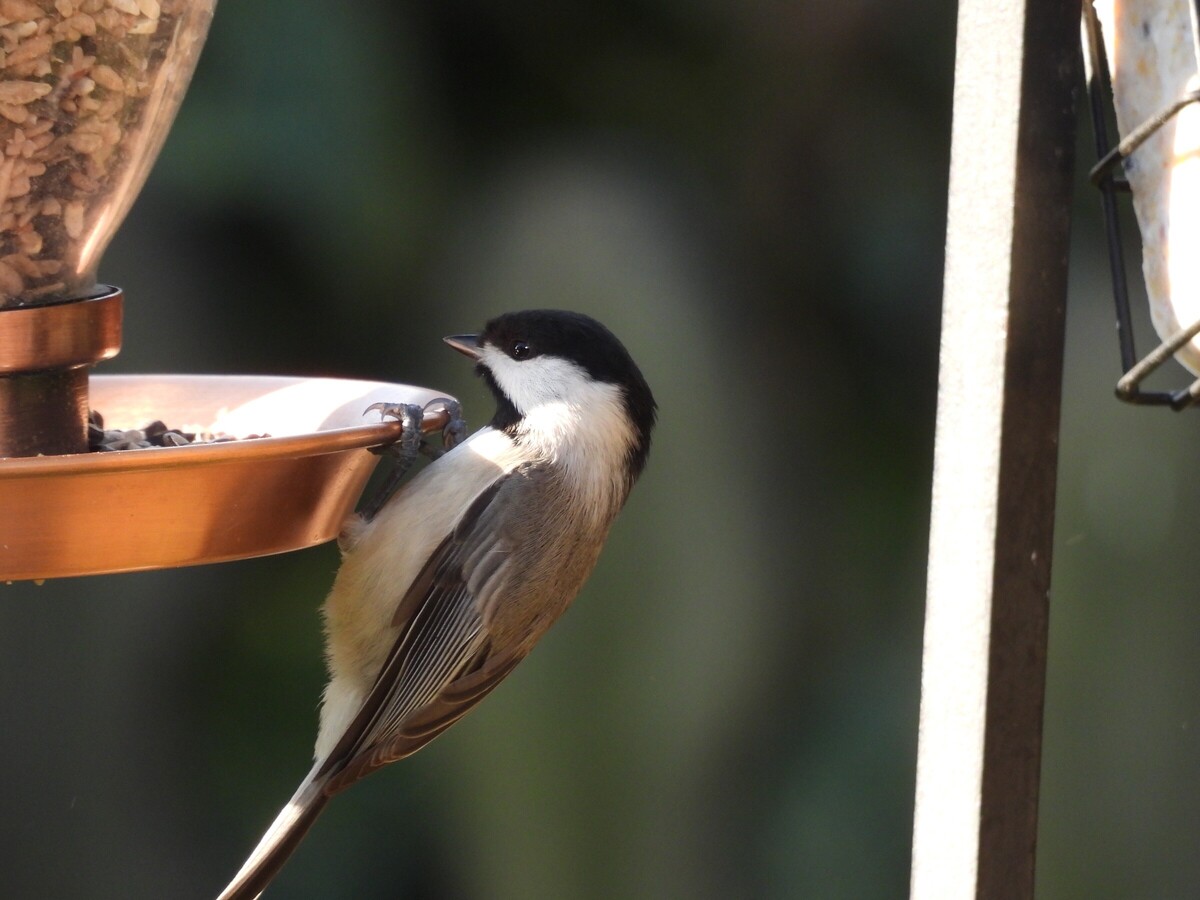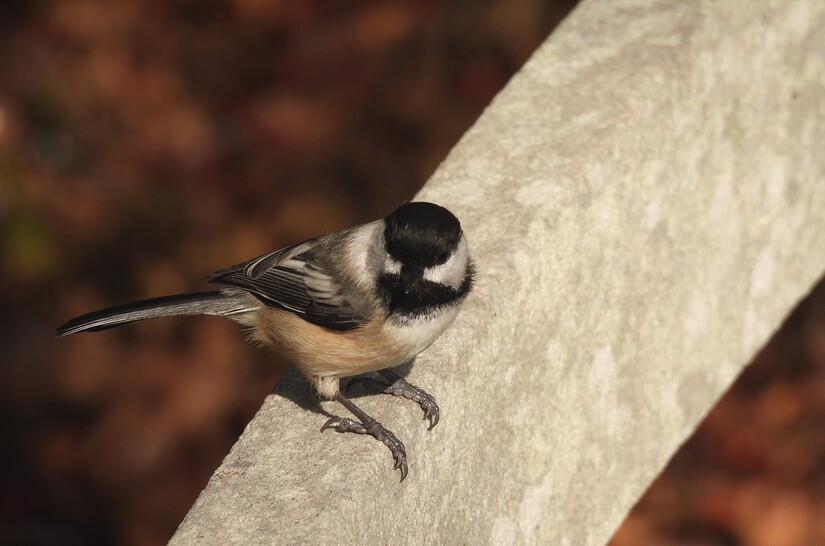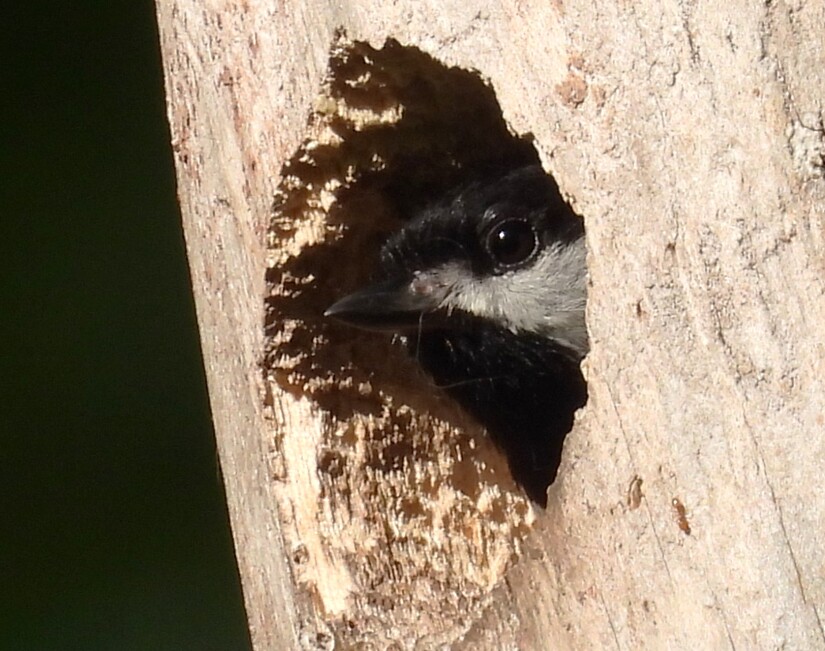Image

by Mike Strzelecki*
Chickadees are crowd pleasers. They are active at backyard feeders, very acrobatic in flight, and look quite sharp in their black hood with gray and white suit. They exude joy in their daily endeavors.
They are also one of the most misidentified birds in this region.
There are two types of chickadees in Pennsylvania - the black-capped chickadee and the Carolina chickadee. The conundrum for birders is that they look almost exactly alike. They both sport a similar black hood and have nearly identical plumage, with only subtle differences usually not visible to the viewing eye (which we will discuss later).
Where chickadees differ is in their living environment. Black-capped chickadees generally prefer mountainous terrain and are more commonly found in northern regions. Carolina chickadees gravitate to lower terrain and tend to populate southern regions. Chickadees also tend not to cohabit the same areas, although there is often a thin demarcation zone where the two species intermingle and sometimes cross-breed creating a hybrid species.
As such, chickadees are one of the few birds where location is the primary identification parameter, as opposed to visible appearance. Here is a photo of a Carolina chickadee taken in Potomac, Maryland, collecting nesting materials.

And one of a black-capped chickadee taken while on vacation in Massachusetts.

Let’s look at Berks County in general. The county has historically been an area where both species of chickadees existed, with the vast majority being black-capped chickadees. Ornithological studies have shown that this dynamic has changed over the years. Black-capped chickadees are pushing out of the county northward and the Carolina chickadees from the south are taking their place.
Currently, the only black-capped chickadees in Berks County are located along its northern border, the mountainous areas around Hawk Mountain. The remainder of the county is prime Carolina chickadee habitat. In the Boyertown area, if you see a chickadee in your backyard, it’s almost certainly a Carolina chickadee.
This does not mean that an occasional black-capped chickadee may not wander southward from the Hamburg area into your neighborhood in search of good bugs and seeds. But the chances of that happening are slim. I read where one expert birder in the Reading area, who sees countless chickadees in his daily wanderings, has only seen two black-capped chickadees in the sub-mountainous Berks County area in the last five years. Carolina chickadees essentially own the county.

If you want to attract chickadees to your yard, a decent squirrel-proof seed feeder usually does the trick. Chickadees are considered non-migratory - they do not undertake long-distance seasonal travels to breed or chase food (although they may move around within a region to find the best feeding opportunities). As such, you can often see them year-round.
If you want to be sure that the chickadee you are looking at in the Boyertown area is indeed a Carolina chickadee, you could always use the Merlin app which identifies chickadees by song (and seems to do a good job of differentiating the Carolina chickadee from the black-capped chickadee).
Or you could become a chickadee expert and understand their subtle plumage differences. The primary difference in appearance is that black-capped chickadees have a thin white trim along the edges of their secondary wing feathers. When they are perched, and the feathers are folded, you will notice a thin white line along their side that resembles a hockey stick. There are also very subtle differences to the hood shape and the bird size usually not discernable to the naked eye.
There are two other common chickadees in the United States that warrant mention, even if they are not found in Pennsylvania. The mountain chickadee tends to be found in the Rocky Mountain states and have a less-pronounced hood. Here is a mountain chickadee.

Chestnut-backed chickadees are very common in the Pacific Northwest, and bring a welcome splash of color to their species.

* Mike Strzelecki is a freelance travel and outdoor writer, and 1981 graduate of Boyertown Area Senior High School. He writes from his house in Baltimore, Maryland. In his spare time, he joins his wife on adventures around the country observing and photographing birds.